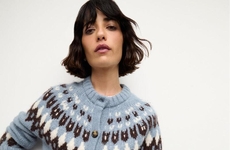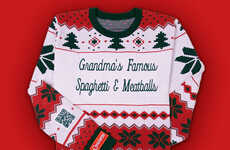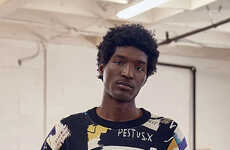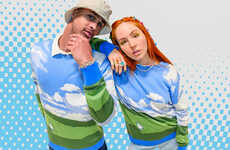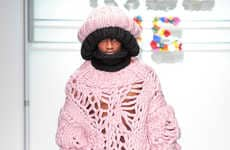
Sondra Eklund Represents Numbers in Color
Jamie Danielle Munro — April 30, 2012 — Fashion
Math and fashion don't always mix, but Sondra Eklund has managed to combine the two in a quirky sweater. The design represents every number between two and 100 by only using colors. Numbers alone would have just been too easy, so the mathematician and avid knitter decided to challenge herself with this design.
By starting in a certain area on the sweater, and with various colors representing different numbers, Eklund presents mathematical equations that equal various numbers. For a non-math person, the design is just plain confusing, but after reading her description on how to read the sweater, everything makes a lot more sense.
Stay cozy and exercise the brain with this cute and mathematical sweater designed by Sondra Eklund.
By starting in a certain area on the sweater, and with various colors representing different numbers, Eklund presents mathematical equations that equal various numbers. For a non-math person, the design is just plain confusing, but after reading her description on how to read the sweater, everything makes a lot more sense.
Stay cozy and exercise the brain with this cute and mathematical sweater designed by Sondra Eklund.
Trend Themes
1. Mathematical Fashion - Opportunities exist for designers and entrepreneurs to develop fashion items which incorporate mathematical concepts, such as equations, graphics and formulas
2. Color Coding for Comprehension - The use of color is an innovational teaching method that can be applied to a variety of fields such as education, design, and art
3. Functional Artistry - Artists and designers can merge functionality and aesthetics to create unique and useful fashion items that add value and meaning to consumer’s lives
Industry Implications
1. Education - Educational professionals can embrace colorful teaching methods to better engage students, aid comprehension and create a more enjoyable learning environment
2. Fashion - Fashion designers can use this concept by incorporating numerical values and equations into their designs to create innovative fashion items that appeal to consumers interested in both math and fashion.
3. Art and Design - Artists and designers can create fashion pieces that are both aesthetically pleasing and mathematically significant, showcasing mathematical concepts in art galleries, media and other creative outlets
0.5
Score
Popularity
Activity
Freshness




